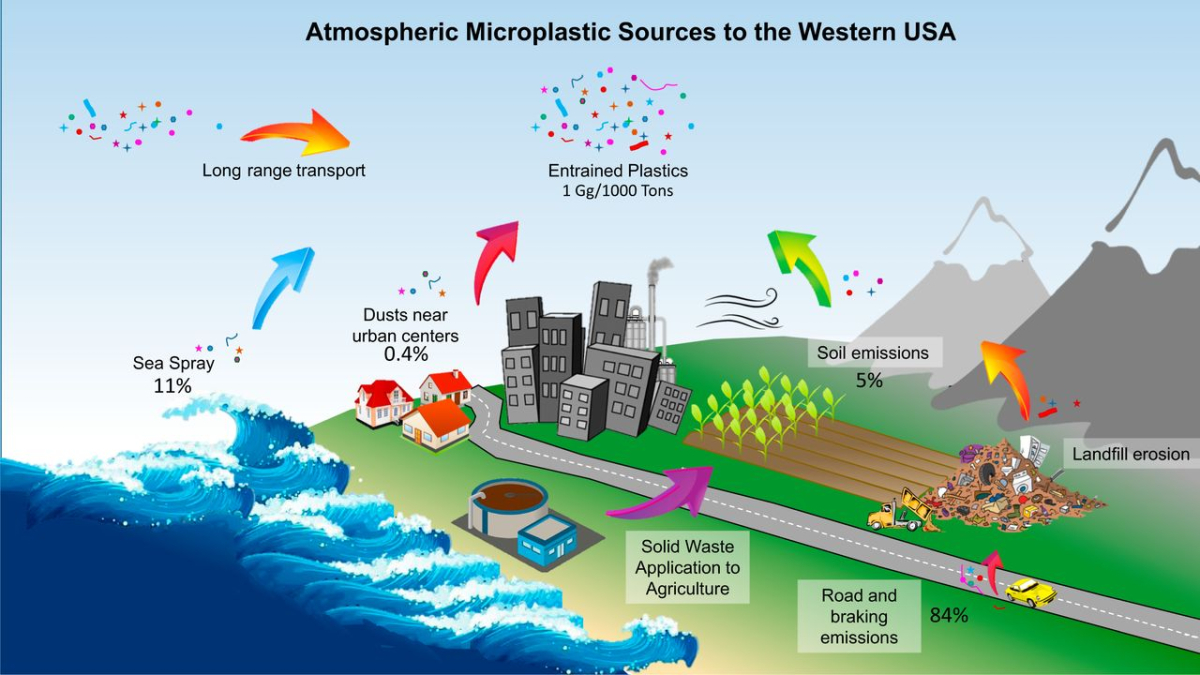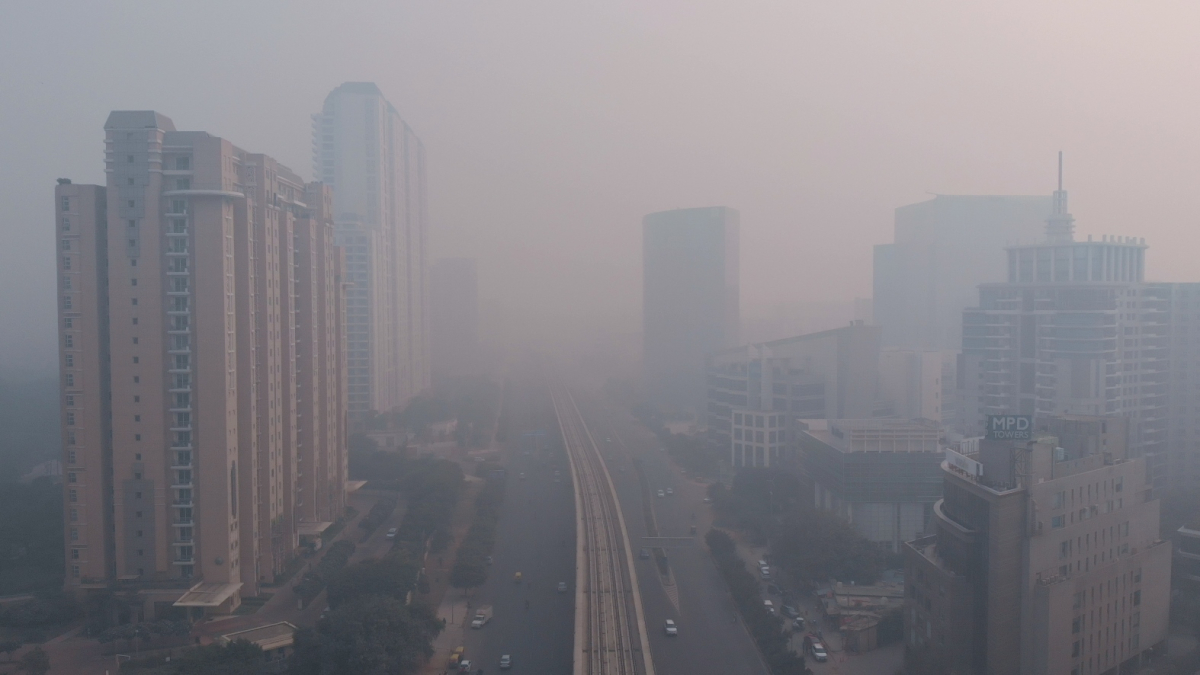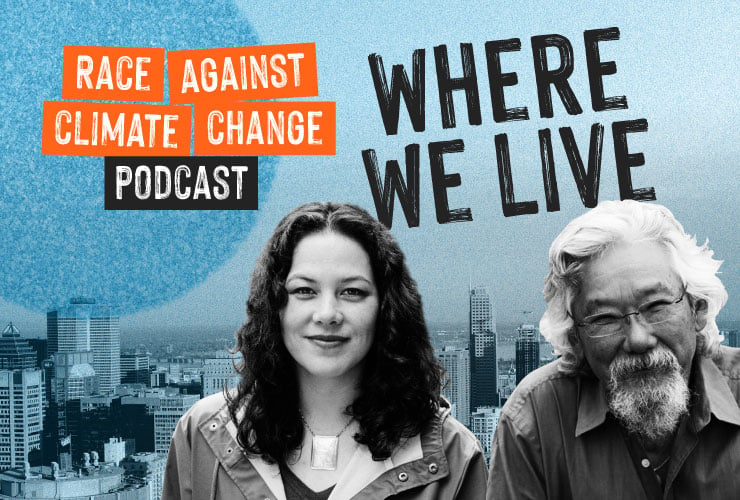Support strong Canadian climate journalism for 2025
This story was originally published by Wired and appears here as part of the Climate Desk collaboration.
Like the ash spewed from a supervolcano, microplastics have infested the atmosphere and encircled the globe. These are bits of plastic less than five millimetres long, and they come in two main varieties. Fragments spawn from disintegrating bags and bottles (babies drink millions of tiny particles a day in their formula), and microfibres tear loose from synthetic clothing in the wash and flush out to sea. Winds then scour land and ocean, carrying microplastics high into the atmosphere. The air is so lousy with the stuff, that each year, the equivalent of over 120 million plastic bottles fall on 11 protected areas in the U.S., which account for just six per cent of the country’s total area.
In a new study published in the journal Nature, scientists have taken the first swing at modelling how the atmospheric particles could be influencing the climate, and it’s a strange mix of good news and bad. The good news is that microplastics may be reflecting a tiny bit of the sun’s energy back into space, which would actually cool the climate ever so slightly. The bad news is that humanity is loading the environment with so much microplastic (ocean sediment samples show that concentrations have been doubling every 15 years since the 1940s), and the particles themselves are so varied, that it’s hard to know how the pollutant will ultimately influence the climate. At some point, they may end up heating the planet.
Earth absorbs some of the sun’s energy while also reflecting some of it, an exchange known as radiative forcing. Like other aerosols in the atmosphere, such as dust and ash, microplastics interact with this energy, the modelling found. “They're very good at scattering sunlight back to space, so we see that cooling influence coming through,” says atmospheric chemist Laura Revell, lead author of the new paper. “But they are also pretty good at absorbing the radiation emitted by the Earth, which means that they can contribute to the greenhouse effect in a very small way.”

Like snowflakes, no two microplastics are alike — they’re made of many different polymers, and they come in a rainbow of colours. Fragments chip away as they tumble around the environment, while fibres split over and over again. And each particle grows a unique “plastisphere” of bacteria, viruses, and algae.
So when Revell and her colleagues set out to build a model of how they affect the climate, they knew it would be impossible to represent so much diversity. Instead, they determined the general optical properties of fibres and fragments as two main groups — for instance, how well they’d reflect or absorb the sun’s energy. They based their model on pure polymers without pigments and assumed an atmospheric composition of 100 particles per cubic metre of air. The researchers then plugged all this into an existing climate model, which told them the estimated effect that atmospheric microplastics would have on the climate.
The current net effect is basically a wash, they found. The slight cooling caused by reflection would pretty much cancel out the slight warming caused by absorbing the sun’s radiation. (They didn’t translate this into a potential temperature change for the climate overall.)
The Earth may actually get more cooling from dust in the atmosphere. If you’ve heard of solar geoengineering, it’s the same principle: Planes spray aerosols, which bounce the sun’s energy back into space. Oddly enough, cargo ships do it too, albeit inadvertently: The clouds of pollution they spew both contribute to global warming and act as light-reflecting clouds.
“I want to emphasize that this is not a good thing, though,” says Revell of the slight cooling effect. First of all, microplastic is its own danger to ecosystems — and our own bodies. And second, colour is one of the limitations of such an early model. While the researchers based their model on non-pigmented particles, microplastics come in a wide range of hues, clothing microfibres in particular. Colour will have a significant influence on potential radiative forcing: Darker hues absorb more energy, while lighter colours reflect more. Once the colours of the particles are factored into future models, scientists may find they are actually likely to lead to warming. At present, there’s just no way of knowing how many particles of what colour are swirling in the atmosphere. Plus, the microbes that grow on the particles might change their reflectivity, as well.

This new modelling is the beginning of the marriage of climate science and microplastic science. “This is an interesting first study on the direct radiative forcing of atmospheric microplastics,” says Cornell University atmospheric scientist Natalie Mahowald, who has modelled microplastics in the atmosphere. “The results are likely to be very sensitive to the assumptions about the size, distribution, as well as the colour of the microplastics.”
As Mahowold points out, distribution is another complicating factor for this early model. Scientists can take air samples and characterize the microplastics they snag, but those represent just a blip in a massive atmosphere — plus, the population of microplastics at 100 feet off the ground might be way different than at 1,000 feet. Smaller plastics, for instance, might loft higher. Revell and her colleagues also used a set concentration — 100 particles per cubic metre of air — whereas scientists are getting wildly different counts as they’re sampling around the world. Over the ocean, plastic concentration might be less than one particle per cubic metre, but above Beijing it’s 5,600, and above London it’s 2,500.
And then there are the nanoplastics, which are smaller than a millionth of a metre, the product of larger bits degrading until they finally reach the nano realm. Very few scientists have the equipment and expertise required to sample for nanoplastics, but one team working in the remote Alps found that a minimum of 200 billion particles fell on a single square metre of a mountain each week. The atmosphere is positively teeming with plastic particles — yet scientists can’t detect them all.
But there’s an indication in the new model that the presence of so many pollutants is doing something to the climate, and one area of speculation is whether they are influencing cloud formation. A cloud forms when water gloms onto particulate matter like dust. What if atmospheric microplastics are actually acting as additional nuclei?
In the lab, at least, scientists have watched the particles gather ice in special chambers that replicate atmospheric conditions. “This would then be a really fascinating pathway if microplastics were behaving in this manner and contributing to clouds, just because clouds have such huge effects themselves on the energy balance and on the climate system,” says Revell. Bigger, brighter clouds bounce more of the sun’s radiation back into space, so this is one way that the pollutants could deflect energy.
Revell will be doing more sampling of atmospheric microplastics to feed more data into her modelling. And it's very likely that over time, there will only be more plastic to sample.
“Unless we really make some huge changes to how we're dealing with microplastic pollution, and our rates of plastic production and our waste management practices, then we just expect that plastics are going to continue to fragment out there in the environment,” says Revell. “They'll be producing more microplastics. And those microplastics will be able to be picked up by winds and carried around and exert a large influence on the climate.”






Comments